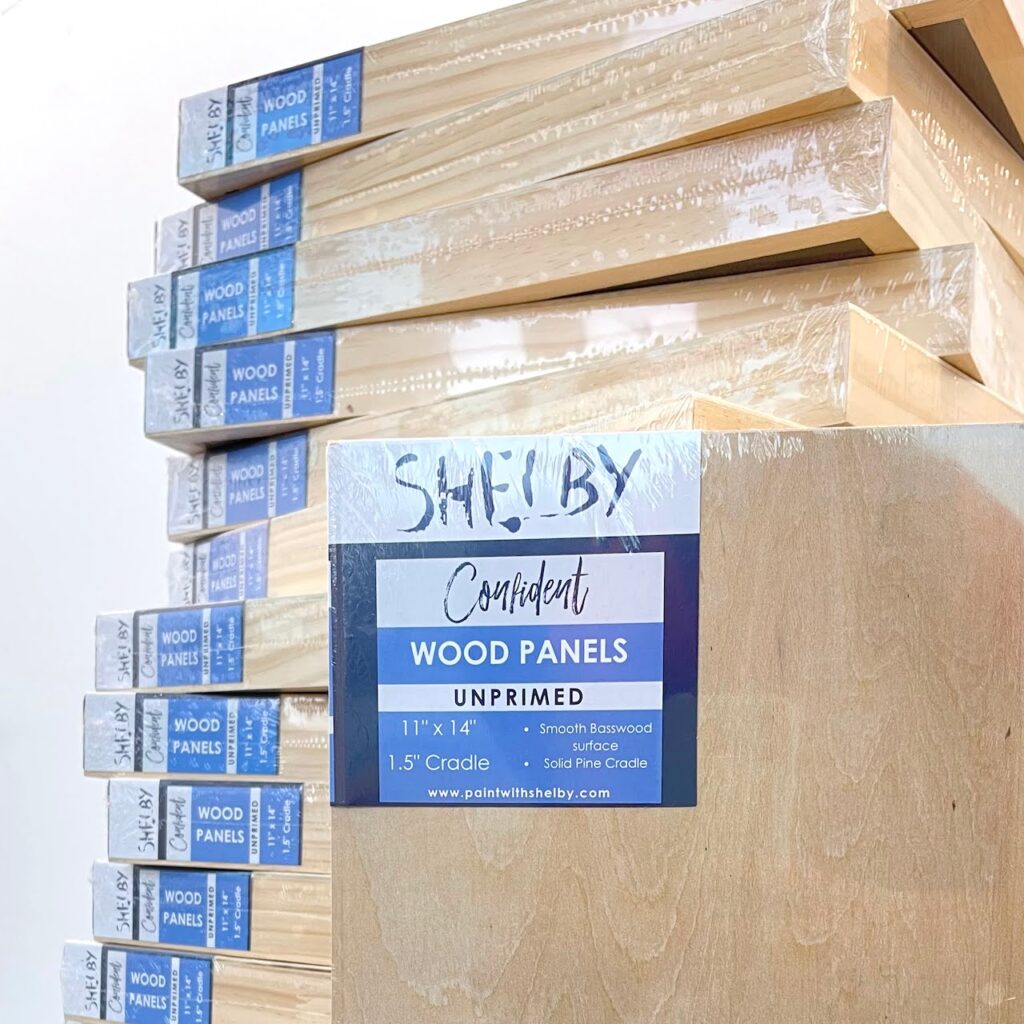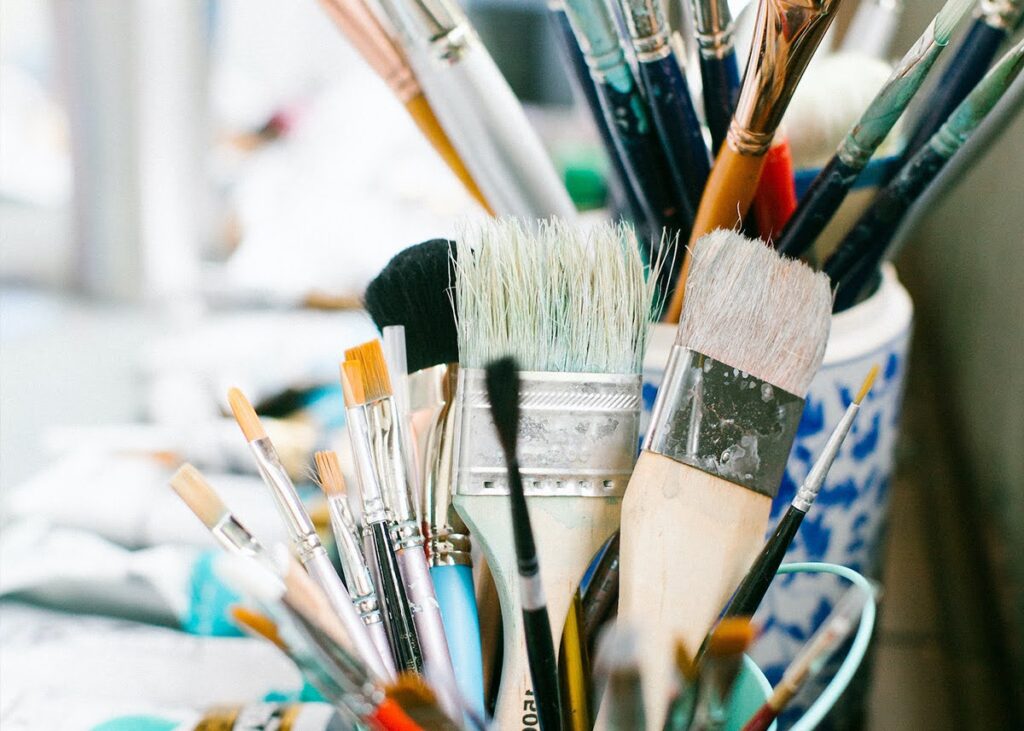
If you’re just starting out with painting, picking the right surface can feel a bit tricky. Whether you’ve just snagged your first set of acrylics or you’re gearing up for a new project, the surface you choose can really impact your work. In this post, I’ll share the best painting surfaces for beginners, my top picks, and some tips on how to prep your surface for awesome results.
Stretched Canvas: The Perfect Surface for First-Time Painters
For a first-time painter, I highly recommend starting with a regular stretched canvas. Stretched canvases are probably what come to mind when you think of painting. They’re white, prepped, and ready to go—perfect for diving right in without any extra steps.
When you’re shopping, look for “professional stretched canvas.” As long as it’s white, that means it’s already been prepped with gesso, so you won’t need to add any extra layers.

Stretched canvases are sturdy, lightweight, and ready to hang, making them a great option for beginners.
Why I Love Panels for Painting
I always suggest that beginners start with a canvas, but I personally love using painting panels for my own work. Panels are flat, smooth surfaces that I find perfect for adding more detail and texture. They also come with a few key benefits:
- Smooth Surface: The smooth texture of panels makes it easier to get fine details.
- Durability: Panels are usually sturdier than canvas, which helps keep your artwork nice and flat over time.
- Portability: They’re lighter and easier to carry around, which is great for traveling or outdoor painting sessions.
- Customizable Prep: I love that I can prep them in different ways to match my style.
Cost-Effective: Panels tend to be a bit more budget-friendly compared to canvases.

Once you’ve gotten comfortable, you can experiment with panels and other surfaces to see what works best for your specific style.
Canson Canva Paper: Affordable and Easy to Work With
For those who want to experiment without breaking the bank, another great option is Canson Canva Paper. It has a nice texture that holds acrylic paint well, making it perfect for practice pieces or smaller projects. You can usually find these pads at any major art supply store, and since they’re affordable, you won’t feel pressured to make every painting perfect.

This paper allows you to experiment and play without worrying about wasting more expensive materials—so don’t be afraid to make mistakes!
Feeling Adventurous? Try Wood Panels
If you’re feeling adventurous, I recommend giving wood panels a try. Panels provide a slick, firm surface that creates a different painting experience. The solid backing allows for heavy textures and bold strokes. Some artists prefer wood panels for their durability and unique feel.

As with any surface, it’s all about finding what feels comfortable for you!
Prepping Your Painting Surface: Canvas & Panels
If you decide to use a panel or a wood surface that hasn’t been prepped (meaning it doesn’t have gesso on it), you’ll need to add a couple of coats of gesso to ensure your paint adheres properly. Gesso is a primer that helps create a smooth, even surface to paint on. We have a “How To” video in Acrylics 101!
Here’s what you’ll need:
- Gesso: My go-to is Liquitex gesso. It’s reliable and easy to work with.
- Chip Brush: I recommend using a large, thick chip brush with natural bristles.

Don’t Forget the Essentials: Rags & Paper Towels
Always keep some rags or paper towels handy. They’re important to have close by for wiping brushes, cleaning up spills, and keeping your workspace tidy. Plus, having them on hand makes it easy to blend and soften areas of your painting if needed.
While any surface can work for acrylic painting, stretched canvas is perfect for beginners because it’s easy to find and comes ready to use. Once you’re comfortable, feel free to experiment with panels, canvas paper, or wood surfaces to see what fits your style. The most important part of the process is enjoying your creative journey, so don’t hesitate to try new things and explore what works for you.
Want to feel confident that you have the best supplies ready to go for your next painting? Check out my brand new line of art supplies HERE!
You’ve got this!
P.S. If you’re ready to unlock your creativity and master acrylic painting, you can now join the waitlist for my Acrylics 101 Painting Course! This course is loaded with step-by-step lessons designed to build your skills and confidence.
How kind of you to share your knowledge. Thank you.
What’s the difference between the first panel you reccomended vs the second ‘wood’s panel which is your favorite? In the pictures you show they look the same. Cradled wood panel. Also, can I order them from you if I’m not a subscribing member?
Hi Dale! The two wood panels I mentioned are the same. However, both of the pictures are unprimed panels, I spoke about buying unprimed vs primed, and how I would suggest unprimed so you can prime and gesso them yourself when you are ready to paint! Also, yes, you can order if you are not a member! All of my supplies are located on my site under “New! Supplies” 🙂